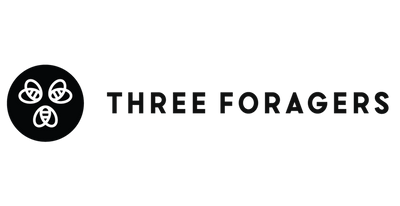

· By Three Foragers
Our Favourite Raw Honey And Bee Facts
Our honey farm loves trivia!
Every Tuesday, we test the knowledge our fellow honey enthusiasts with some of the most fun facts around, and we thought that it was time to put some of our favourites in one spot. There’s just so much to know and love about raw honey and honeybees! If you aren’t already challenging yourself with our Tuesday Trivia, make sure to follow us on Facebook and Instagram.
So let’s dive into some of our favourite fun facts about raw honey and the bees that make it.
Raw Honey Has Been Used For Thousands Of Years
Honey stains have been found on 5,500-year-old ceramic jars, but the history of humans gathering honey goes back even further. Cave paintings from 7,000 years ago depict humanity’s interaction with bees and the honey they would collect from wild colonies. We just hope they didn’t get stung too badly.
Not only has honey been used for thousands of years, but it also has no expiry date. 3,000-year-old honey excavated from ancient Egyptian tombs is still perfectly edible.
A Hive Can Produce Over 300lbs Of Honey A Year
That’s a lot of honey! It’s also much more than the bees need to survive the winter, and that’s where we come in. A colony needs around 50lbs of honey to survive the winter months. All of the extra honey is collected by our expert apiarists, packaged, and shipped to stores near you.
It Takes 12 Bees To Make A Teaspoon Of Honey
That might seem like a lot, but at the height of summer, honeybee colonies are over 100,000 strong. All of the bees work together to make delicious raw honey.
Raw Honey Contains Antioxidants
Raw honey is a nutritious and sustainable sweetener. It’s chock-full of good stuff like amino acids, vitamin B6, thiamine, niacin, riboflavin, pantothenic acid, calcium, copper, iron, magnesium, manganese, phosphorus, potassium, sodium, zinc, enzymes, and antioxidants called polyphenols.
Raw honey can help improve cholesterol, lower blood pressure, and fight off heart disease and some types of cancers.
To get the full benefits of honey, make sure you’re eating the raw kind. Pasteurizing honey removes most of the beneficial enzymes, antioxidants, and vitamins.
Honey Is Versatile
Not only does honey go great with tea or on toast, but it also has a bunch of creative uses. Make a honey scrub or lip balm, or add it to homemade cough syrups. Honey has even been used to treat wounds! Honey has so many beneficial uses outside of food.
Honey Is Antiseptic And Antimicrobial
Honey has some incredible properties that kill and prevent the growth of bacteria. It has a low moisture content, is highly viscous, and recent studies have shown that it contains a protein called defensin-1. In the future, this protein could potentially be used to combat antibiotic-resistant infections.
Beeswax Comes Out Of A Honeybee’s Abdomen
If you’ve been curious where beeswax comes from, wonder no more. A worker bee has eight special wax-secreting glands on its abdomen. The wax is used to build hexagonal honeycomb used to raise young bees and store honey.
Bees Communicate By Dancing
Honeybees can send complex messages to one another through a waggle dance. This is how they communicate where the most nectar-rich flowers are located. The longer the waggle, the further the flower, and the angle in which the bee dances gives direction. The dance is so accurate that they can pinpoint nectar sources 7km away from the hive.
There Are Three Types Of Bees In A Hive
A hive is made up of a queen, drones, and the workers. The queen lays eggs, the male drones mate with the queen, and the female workers do all the heavy lifting. Each bee is important for the success of the colony.
A Queen Lays 2000 Eggs A Day
During the height of production, the queen can lay over 2,000 eggs a day! That means more than one egg is laid every minute. That’s a lot of work! A colony gets its strength in numbers. The larger the colony, the more honey can be produced.
Honeybees Have 5 Eyes
A honeybee’s visual system is incredibly complex. Three ocelli eyes are on top of their heads to help judge light intensity and see UV rays. Two large compound eyes on the sides of their head, allowing them to see colour.
This complex system allows them to see faster than humans too. Their brains can interpret colours at three times the rate of the average human being. Seeing faster enables bees to identify flowers when they are zig-zagging through bushes quickly.
Did you enjoy our favourite raw honey and bee facts? Do you have a favourite fact to share with us? Share it with us in the comments below! If you want to keep learning about bees, apiaries, and honey, make sure to check our Tuesday Trivia on Facebook and Instagram.
